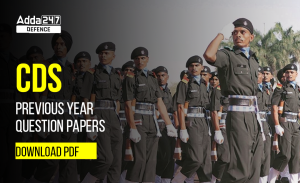How to Write Report for CAPF 2022
A report writing is a formal style of writing in detail about something that has been observed, heard, accomplished or researched. It is a systematic and well organized presentation of the facts and results of a case that took place somewhere already.
Components of Report Writing
- Structure of a Report includes –
- Byline: To tell about the writer, date and place of the story.
- Lead: Covers the most important facts.
- Body: Includes detailed information.
- Ending: Conclusion by telling solution to work upon and the actual causes.
- In starting, on the top left corner you need to mention three things one after another vertically, first is ame of the reporter, second the place from where it has been reported and the last is the date of the report. In exam you can just write ABC in the place of writing the name of reporter, and place would be your exam location and the date would be your exam date. Below is the sample given how to write the three
ABC
New Delhi
7 August 2022 - Answering the 5Ws, While writing a news report, make sure you answer all the 5w questions –
- What was the event?
- Where did it take place?
- When did it take place? (Date and Time)
- Who was involved in the event?
- How did the event happen?
After you have collected all these answers, you can begin writing the news report.
- Whole report is always written in the past tense.
- Event has already happened and you are reporting the same event as a reporter.
- Try to avoid biasness, As a reporter you just need to state the facts in the report. A good report is one which is neutral with all the important details.
- You can add value to your report by adding recent relevant studies, committee, reports of relevant organizations. It must be relevant and make sense.
- You can quote other people whose statement has value and relevant to the topic of the report.
Example of Report Writing
Example – Domestic Violence against women in India (CAPF AC 2014)
ABC
New Delhi
7 August 2022
Violence against women is a serious problem in India. According to the latest National Family Health Survey-5 report, Nearly one-third of women in India have experienced physical or sexual violence. While domestic violence against women has declined from 31.2% to 29.3% in the country, 30% women between the age of 18 and 49 have experienced physical violence since the age of 15 years, while 6% have experienced sexual violence in their lifetime. The survey finds that 32% of married women (18-49 years) have experienced physical, sexual, or emotional spousal violence. The most common type of spousal violence is physical violence (28%), followed by emotional violence and sexual violence.
The term domestic violence (DV) is used in many countries to refer to intimate partner violence, but it also includes child or elder abuse, or abuse by any member of a household. According to WHO, one in every three women across globe experience physical or sexual violence by an intimate partner or women who have been in a relationship have experienced physical and/or sexual violence by their intimate partner.
Substantial amount of data has been generated by official agencies particularly the NCRB, and the NFHS (National Family Health Survey), to promote an informed discussion on the phenomenon, not to speak of NGO reports. For recent years, information has been gathered through the MHRD’s dashboard to coordinate with the organizations providing assistance to affected women through the OSCs (One Stop Centers), apart from the national and state level women’s commissions.
All of the above mentioned facts point to the pervasiveness of domestic violence in the country, spreading across regions, religions, social class, educational backgrounds and age of both victims and perpetrators. Studies and experience on the ground both puncture any understanding which may repeat stereotypes that only poor, uneducated man beat their wives and are abusive. There is a need to accept that in India certainly growing up male is about internalizing a sense of power of gender. Far from critical engagement with these prejudices, the gendering of power seems to have become a public project in recent years.




 CDS Previous Year Question Papers, Downl...
CDS Previous Year Question Papers, Downl...
 Last 11 years CDS General Knowledge Prev...
Last 11 years CDS General Knowledge Prev...
 Last 11 Years CDS Mathematics Previous Y...
Last 11 Years CDS Mathematics Previous Y...
